Home Energy Saving Technology
There are many items of electronics technology that are available these days to provide with saving energy, lowering costs, and reducing environmental impact.
Energy Saving Technology Includes:
Home energy saving technology
Guidelines for home energy saving
List of energy saving gadgets
How to choose best LED light bulbs
Plug-in timer switches
Plug-in power meter / usage monitor
With the drive to become far more energy efficient there is a lot of energy saving technology and electricity saving gadgets that are available.
Even though the drive to become more eco friendly is there, using energy saving technology can save significant amounts of money, even after the cost of the energy saving technology and gadgets has been taken into account.
There are many gadgets and pieces of electronics technology that can be bought, many relatively cheaply, which can provide a good improvement in the use of energy. These energy saving gadgets can come in a variety of forms.
Why invest in energy saving technology & gadgets
People want to invest in energy saving technology not only to reduce their carbon footprint and become more eco-friendly.
This energy saving technology can also help to reduce bills and to ensure that some household functions can be carried out automatically, thereby saving time.
In many cases the investment in these gadgets and technology can produce large savings over time. There is an initial outlay, but normally over time they will give a pay-back on the investment.
Also as time goes on, there is likely to be an ever increasing focus on sustainability, energy saving and general efficiency of the use of energy. This technology will only become more important with time.
Some of the energy saving technology and gadgets are simple replacements, others may be relatively simple to install, but others may require a slightly greater level of installation.
Change to LED lighting
LED lighting is one of the easiest home energy saving technologies to implement. Today most forms of light that were available as filaments lamps are now available in LED formats.
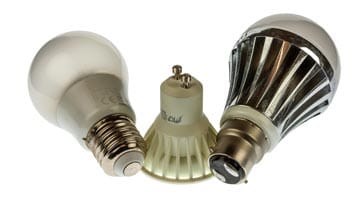
One of the key advantages of LED lighting is their improvement in energy efficiency. Typically an old filament lamp would offer an efficiency level of possibly 5% or 10% at the absolute most, whereas LED lighting offers an efficiency level of more than 85%. Some LED lights may even offer efficiency levels greater than 90%, although this is very dependent upon the light itself.
Use an energy saving kettle
In the majority of households, a kettle is on the go a lot of the time. However, we normally boil very much more water than we need. It may be there is scale in the bottom so it needs to be full enough not to pour that out, or we just fill it up so that we have more than we need.
Whatever the reason, as we boil more water than we need, the efficiency drops and we waste energy. It is easy to boil water sufficient for three or four cups when only one is needed.
The answer is to fill the kettle with only as much water as is needed. This can be done with ordinary kettles, but often this has to be done carefully. However, there are some new kettles coming onto the market that are designed so that they can easily boil a single cup more easily. Typically they enable you to see how much water you are using more easily.
Claims of a 66% energy saving are claimed, although in normal usage, this may be less.
Although the efficiency of the energy conversion from electricity to heat remains the same, less water is heated and this gives a major saving in energy.
Use timers
There are many devices we tend to leave on all the time. The power from even comparatively low current devices can mount up and have an impact it only on the electricity bills but also on our carbon footprint. Even leaving items like televisions, etc on standby drains current as the device is still live.
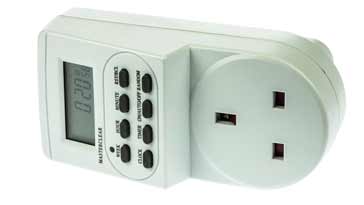
There are some devices that might be needed at certain times in the day, and it can sometimes be useful to use a timer so that the devices are off when they will definitely not be needed, but powered when they might be needed.
Although the timer will draw a some current it will be less than some items items, particularly those that tend to consume a bit more power. Typically a timer will consume around a watt or energy.
Buy a mains plug power meter
If you want to see what power individual electrical items are using, then a small plug in power meter is an ideal way to do this. These are very useful and relatively cheap items of home energy saving technology.These meters are widely available for a relatively low cost and they are a very good way of finding out what power individual electrical items use - they must be items that are plugged into a power socket though.
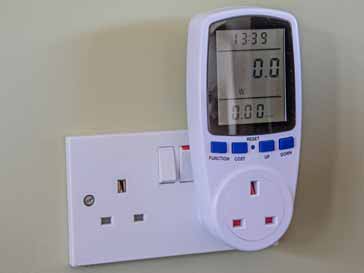
The idea of the power meter is that you unplug the item you want to test, plug in the power meter, and then plug the item to be tested into the power meter. The power meter simply monitors the power flowing though it and into the item under test.
Install solar panels
Another way of installing home energy saving technology , saving energy and cutting costs is to install solar panels. In fact in some areas, new buildings need to have these panels installed from the beginning.
Although not a cheap option, they have come down in price considerably in recent years, and the technology to make the most of the electricity generated has advanced significantly.
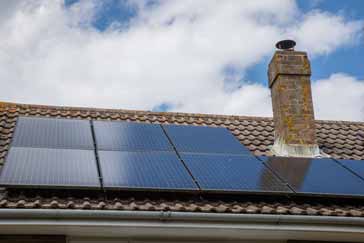
These solar panels generate electricity from the sun, and normally they are used in conjunction with the local mains power line. They will supply energy for usage by the household when the sun is available and the electricity is required, and any surplus will be fed into the power grid system.
The system requires the use of an array of solar panels. Direct current is generated which is fed into an inverter which converts the power to alternating current of the correct voltage. It also synchronises the frequency of the alternating current power with that of the incoming mains.
The metering systems will measure the power generated and also the power drawn from the normal electricity system. It means that using appliances when the sun is out will reduce the power which is paid for, thereby reducing energy costs. Also the energy generated will reduce the amount that needs to be generated by other means, thereby saving on greenhouse emissions.
Note on Solar Electricity Generation:
Solar panels are now widely used for generating electricity not only for small self contained items needing power, but more importantly for mains power systems. There are solar farms as well as local generation where panels are placed on the roofs of houses, etc.
Read more about Solar Electricity Generation.
Control systems are available these days to control the power utilisation for large elements such as heating and electric car charging. These systems regulate the power supplied to these systems that require a high current so that locally generated power is prioritised and in this way electricity costs are minimised.
Install a smart meter
Many utility suppliers are now installing smart meters. These meter the supplies used and then provide wireless communications to report the usage figures back to the utility supplier. This means that customer meter readings and the utility company meter readers are now longer needed.
This has two major benefits. First the utility company is able to have a much better insight into the usage which then enables a much more efficient generation and supply of the utility. Secondly it enables the user to see what is being used as the smart meters generally link to an In-Home Display, IHD which displays usage in an intelligent fashion.
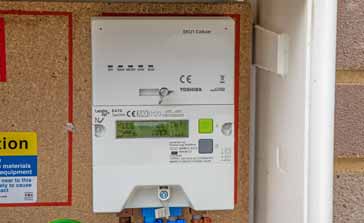
Using the readings from the IHD, it is then possible to optimise and reduce any usage.
Both these benefits can reduce the carbon footprint of utility usage as well as reducing costs.
 Written by Ian Poole .
Written by Ian Poole .
Experienced electronics engineer and author.
More Eco / Green Engineering Topics:
Smart meter technology
Solar electricity generation
Smart grid
Home energy saving technology
LED lights
Energy saving guidelines
Return to Eco / Green Engineering menu . . .



